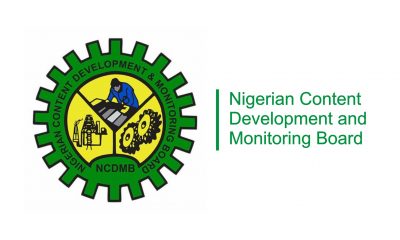Oil & Energy
NUPENG Lauds FG Over Hydrocarbon Mapping
The Zonal Chairman of NUPENG, (Port Harcourt Zone), Comrade Godwin Eruba has commended the federal government’s move to approve the execution of a comprehensive hydrocarbon mapping of the country by Nigerian National Petroleum Corporation (NNPC).
The NUPENG boss who made the commendation during an interview with The Tide in Port Harcourt recently explained that because the hydrocarbon mapping is designed to pinpoint the most prospective oil and gas zones in the country it help in the issuance of licences to oil mining prospectors.
According to him it is not only pinpoints the oil bearing and producing states but also helps in knowing the quantity of oil that are there.
It would be recalled that NNPC in the last six months has intensified the search for commercial crude in the Chad Basin which is part of the Nigerian Frontier Inland.
Inclusive in the NFISB are Anambra State, Bida, Dahomey, Gongola, Yola and Sokoto basins alongside the middle/lower Benue.
The Group General Manager, Group Public Affairs, NNPC, Dr. Levi Ajuonuma was reported as also saying that the comprehensive hydrocarbon mapping project which will be the first in the over 100 years history of crude oil exploration in Nigeria is designed to guarantee precision and exactitude in the evaluation of data in the course of exploration of inland basins.
Describing the drive by NNPC to increase the nation’s crude oil reserves as in top gear, Ajuonuma said they have the complete support of President Jonathan and the Minister of Petroleum Resource top go full throttle.
He explained that the idea is to look beyond the prolific Niger Delta Basins with good sedimentation and robust history.
A renowned geophysicist and consultant to the United Nations, Prof. Deborah Ajakaiye working in consultation with NFISB in the search noted that the hydrocarbon mapping exercise include the aerial and ground survey of the country designed to specify areas of high potential and identify most prospective oil and gas zones.
According to her “the project entails the comprehensive and systematic airborne geophysical surveys involving gravity, magnetic and electromagnetic surveys of the inland basins with state of the art equipment. It also involves detailed integrated programme of geophysical, geological, petrological and geochemical studies.
She also lauded the federal government for taking up the challenge of accelerated, intensive, comprehensive and systematic exploration of the long neglected inland basins.
She said any commercial discovery based on the outcome of the project would foster the attractiveness of the basins for huge investment opportunities by international oil companies with the attendant massive economic benefits for the host communities and the country as a whole.
Oil & Energy
FG Woos IOCs On Energy Growth
The Federal Government has expressed optimism in attracting more investments by International Oil Companies (IOCs) into Nigeria to foster growth and sustainability in the energy sector.
This is as some IOCs, particularly Shell and TotalEnergies, had announced plans to divest some of their assets from the country.
Recall that Shell in January, 2024 had said it would sell the Shell Petroleum Development Company of Nigeria Limited (SPDC) to Renaissance.
According to the Minister of State for Petroleum Resources (Oil), Heineken Lokpobiri, increasing investments by IOCs as well as boosting crude production to enhancing Nigeria’s position as a leading player in the global energy market, are the key objectives of the Government.
Lokpobiri emphasized the Ministry’s willingness to collaborate with State Governments, particularly Bayelsa State, in advancing energy sector transformation efforts.
The Minister, who stressed the importance of cooperation in achieving shared goals said, “we are open to partnerships with Bayelsa State Government for mutual progress”.
In response to Governor Douye Diri’s appeal for Ministry intervention in restoring the Atala Oil Field belonging to Bayelsa State, the Minister assured prompt attention to the matter.
He said, “We will look into the issue promptly and ensure fairness and equity in addressing state concerns”.
Lokpobiri explained that the Bayelsa State Governor, Douyi Diri’s visit reaffirmed the commitment of both the Federal and State Government’s readiness to work together towards a sustainable, inclusive, and prosperous energy future for Nigeria.
While speaking, Governor Diri commended the Minister for his remarkable performance in revitalisng the nation’s energy sector.
Oil & Energy
Your Investment Is Safe, FG Tells Investors In Gas
The Federal Government has assured investors in the nation’s gas sector of the security and safety of their investments.
Minister of State for Petroleum Resources (Gas), Ekperikpe Ekpo, gave the assurance while hosting top officials of Shanghai Huayi Energy Chemical Company Group of China (HUAYI) and China Road and Bridge Corporation, who are strategic investors in Brass Methanol and Gas Hub Project in Bayelsa State.
The Minister in a statement stressed that Nigeria was open for investments and investors, insisting that present and prospective foreign investors have no need to entertain fear on the safety of their investment.
Describing the Brass project as one critical project of the President Bola Tinubu-led administration, Ekpo said.
“The Federal Government is committed to developing Nigeria’s gas reserves through projects such as the Brass Methanol project, which presents an opportunity for the diversification of Nigeria’s economy.
“It is for this and other reasons that the project has been accorded the significant concessions (or support) that it enjoys from the government.
“Let me, therefore, assure you of the strong commitment of our government to the security and safety of yours and other investments as we have continually done for similar Chinese investments in Nigeria through the years”, he added.
Ekpo further tasked investors and contractors working on the project to double their efforts, saying, “I want to see this project running for the good of Nigeria and its investors”.
Earlier in his speech, Leader of the Chinese delegation, Mr Zheng Bi Jun, said the visit to the country was to carry out feasibility studies for investments in methanol projects.
On his part, the Managing Director of Brass Fertiliser and Petrochemical Ltd, Mr Ben Okoye, expressed optimism in partnering with genuine investors on the project.
Oil & Energy
Oil Prices Record Second Monthly Gain
Crude oil prices recently logged their second monthly gain in a row as OPEC+ extended their supply curb deal until the end of Q2 2024.
The gains have been considerable, with WTI adding about $7 per barrel over the month of February.
Yet a lot of analysts remain bearish about the commodity’s prospects. In fact, they believe that there is enough oil supply globally to keep Brent around $81 this year and WTI at some $76.50, according to a Reuters poll.
Yet, like last year in U.S. shale showed, there is always the possibility of a major surprise.
According to the respondents in that poll, what’s keeping prices tame is, first, the fact that the Red Sea crisis has not yet affected oil shipments in the region, thanks to alternative routes.
The second reason cited by the analysts is OPEC+ spare capacity, which has increased, thanks to the cuts.
“Spare capacity has reached a multi-year high, which will keep overall market sentiment under pressure over the coming months”, senior analyst, Florian Grunberger, told Reuters.
The perception of ample spare capacity is definitely one factor keeping traders and analysts bearish as they assume this capacity would be put into operation as soon as the market needs it. This may well be an incorrect assumption.
Saudi Arabia and OPEC have given multiple signs that they would only release more production if prices are to their liking, and if cuts are getting extended, then current prices are not to OPEC’s liking yet.
There is more, too. The Saudis, which are cutting the most and have the greatest spare capacity at around 3 million barrels daily right now, are acutely aware that the moment they release additional supply, prices will plunge.
Therefore, the chance of Saudi cuts being reversed anytime soon is pretty slim.
Then there is the U.S. oil production factor. Last year, analysts expected modest output additions from the shale patch because the rig count remained consistently lower than what it was during the strongest shale boom years.
That assumption proved wrong as drillers made substantial gains in well productivity that pushed total production to yet another record.
Perhaps a bit oddly, analysts are once again making a bold assumption for this year: that the productivity gains will continue at the same rate this year as well.
The Energy Information Administration disagrees. In its latest Short-Term Energy Outlook, the authority estimated that U.S. oil output had reached a record high of 13.3 million barrels daily that in January fell to 12.6 million bpd due to harsh winter weather.
For the rest of the year, however, the EIA has forecast a production level remaining around the December record, which will only be broken in February 2025.
Oil demand, meanwhile, will be growing. Wood Mackenzie recently predicted 2024 demand growth at 1.9 million barrels daily.
OPEC sees this year’s demand growth at 2.25 million barrels daily. The IEA is, as usual, the most modest in its expectations, seeing 2024 demand for oil grow by 1.2 million bpd.
With OPEC+ keeping a lid on production and U.S. production remaining largely flat on 2023, if the EIA is correct, a tightening of the supply situation is only a matter of time. Indeed, some are predicting that already.
Natural resource-focused investors Goehring and Rozencwajg recently released their latest market outlook, in which they warned that the oil market may already be in a structural deficit, to manifest later this year.
They also noted a change in the methodology that the EIA uses to estimate oil production, which may well have led to a serious overestimation of production growth.
The discrepancy between actual and reported production, Goehring and Rozencwajg said, could be so significant that the EIA may be estimating growth where there’s a production decline.
So, on the one hand, some pretty important assumptions are being made about demand, namely, that it will grow more slowly this year than it did last year.
This assumption is based on another one, by the way, and this is the assumption that EV sales will rise as strongly as they did last year, when they failed to make a dent in oil demand growth, and kill some oil demand.
On the other hand, there is the assumption that U.S. drillers will keep drilling like they did last year. What would motivate such a development is unclear, besides the expectation that Europe will take in even more U.S. crude this year than it already is.
This is a much safer assumption than the one about demand, by the way. And yet, there are indications from the U.S. oil industry that there will be no pumping at will this year. There will be more production discipline.
Predicting oil prices accurately, even over the shortest of periods, is as safe as flipping a coin. With the number of variables at play at any moment, accurate predictions are usually little more than a fluke, especially when perceptions play such an outsized role in price movements.
One thing is for sure, though. There may be surprises this year in oil.
lrina Slav
Slav writes for Oilprice.com.
-
Nation5 days ago
I Was Never Suspended As LP Chairman-Dokubo
-

 News5 days ago
News5 days agoECOWAS Court Orders Nigeria to Pay N52m compensation to Rivers, Lagos Evictees
-
Entertainment5 days ago
Toyin Lawani Cries Out Over Side Effects Of Epidural
-
Sports53 mins ago
‘Don’t Rely Too Much On NCAA Athletes’
-
News5 days ago
Odu Consoles Justice Okirie On Mother’s Demise
-
Politics5 days ago
No Delta Assembly PDP Lawmaker Defecting To APC – Majority Leader
-
Nation5 days ago
Nigerian Police Debunk Reports Of Missing 3, 907 Firearms
-

 Business5 days ago
Business5 days agoHuman Capital Deficit Cost Nigeria USD380bn Capital Flight, Others – NCDMB

